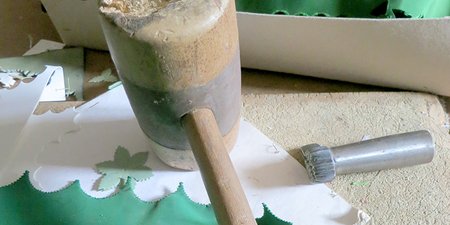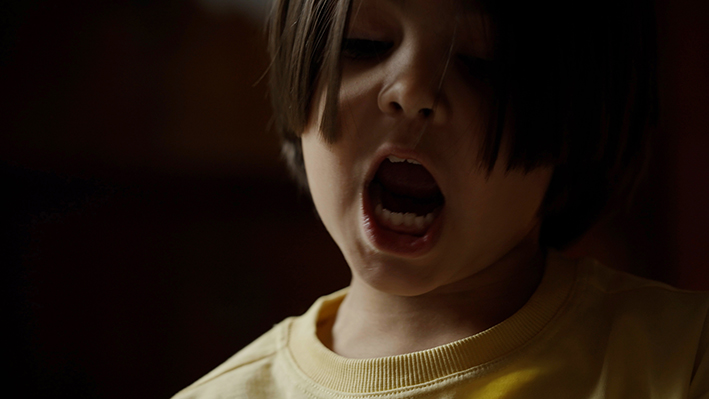Wie schon berichtet hab ich O-Ton und Mix für diesen Talk zwischen Susanne Völker (Kulturdezernentin der Stadt Kassel) und Patricia Nickel-Dönicke (Schauspieldirektorin) im Auftrag des Staatstheater Kassel angefertigt:
Kategorie: Aktuelle Projekte
An diesen Projekten arbeite ich aktuell
Zippel-Preisträger-Video
Auch dieses Jahr wurde der Kasseler Kunstpreis („Zippel-Preis“) wieder in digitaler Form vergeben. Ich habe dazu die Laudationes und Interviews aufgenommen und das ganze gemischt. Hier das Video dazu:
Staatstheater Kassel, Teil1: Spartengespräch Musiktheater
Wie schon berichtet hab ich O-Ton und Mix für diesen Talk angefertigt….
Filmisches Kurzporträt des LOEWE-Zentrum für Translationale Biodiversitätsgenomik
Für dieses Kurzporträt des „LOEWE-Zentrum TBG“ habe ich den O-Ton aufgenommen und gemischt. Kamera: Sascha Mannel
Hier der offizielle Text des LOEWE -Zentrum TBG:
Biodiversität ist das Ergebnis von 3,5 Milliarden Jahren Evolution und eines der komplexesten Phänomene der Erde. Das LOEWE-Zentrum für Translationale Biodiversitätsgenomik konzentriert sich auf die genetischen Grundlagen der biologischen Vielfalt, um sie für die Grundlagen- und angewandte Forschung zugänglich zu machen. Wir sequenzieren und untersuchen genomische Variation quer durch den Baum des Lebens, um den Ursprung und die funktionellen Anpassungen der Vielfalt von Genen bis hin zu Ökosystemen zu verstehen (Vergleichende Genomik). Die Daten adressieren den gesellschaftlichen Wissensbedarf in angewandten Bereichen, wie z.B. die genomische Basis biologisch aktiver Substanzen (Naturstoffgenomik), und die nachhaltige Nutzung und das Management biologischer Ressourcen (Genomisches Biomonitoring; Funktionale Umweltgenomik).
Artist Talk mit Julia Charlotte Richter zu „Blumen made in Trutzhain“
„Blumen made in Trutzhain“ ist ein Dokumentarfilm von Julia Charlotte Richter, zu dem ich 2013 die Originaltonaufnahmen und die Mischung übernommen habe. Zuletzt war der Film zu sehen im Erfurter Kunsthaus als Teil der Ausstellung „Blumenfabrik“ von Marcel Krummrich feat. Julia Charlotte Richter. Hier der Text des Kunsthauses zur Ausstellung und ein interessanter Artist Talk zwischen den beiden, in dem die Künstlerin auch die Produktion des Films beschreibt.
Die Ausstellung BLUMENFABRIK der Galerie | Kunsthaus Erfurt ist eine fotografische Spurensuche des Künstlers Marcel Krummrich. Ein poetischer Nachhall einer Jahrtausende alten, verblassenden Handwerkskunst, auch Blümeln genannt. Die Kunstblumenfabrik Lumpe, 2009 das erste Mal im Rahmen eines Stipendiums für eine andere Serie entdeckt, ließ den Fotografen von da an nicht mehr los und wurde zu einem Langzeitprojekt. Über viele Jahre erforschte Marcel Krummrich Raum für Raum, Stück für Stück die handwerklichen Artefakte der hessischen Kunstblumenmanufaktur Trutzhain.
Seit 1971 ist Trutzhain Teil der nordhessischen Stadt Schwalmstadt. Doch das ist nicht die gesamte Geschichte dieses Ortes. Nach der Befreiung des Kriegsgefangenenlagers diente es der US-Armee als Internierungslager. Anschließend waren die Baracken für etwa ein Jahr Zufluchtsort und Durchgangsstation für osteuropäische Juden bis im Frühjahr 1948 Flüchtlinge und Heimatvertriebene in den Gebäuden des ehemaligen Kriegsgefangenlagers eine neue Heimat fanden. Sie gründeten in der Folge zahlreiche Industrie- und Handwerksbetriebe.
Ein Gebäude, in dem diese wechselvolle Vergangenheit eindrucksvoll sichtbar wird, ist die Kunstblumenfabrik Lumpe. Sie gehörte ab 1948 zu den ersten Firmen Trutzhains. Julia Charlotte Richters Film „Blumen made in Trutzhain“ gibt einen Einblick in die Geschichte der 2003 geschlossenen Kunstblumenfabrik Lumpe.
Film: Julia Charlotte Richter, 2012/2013,
„Blumen made in Trutzhain“, HD, 16:9, 39:35 min
Spartengespräche – Das neue Team des Kasseler Staatstheaters
Das Kasseler Staatstheater stellt in sechs filmischen Beiträgen das neue Team und die neuen Ideen für die nächste(n) Spielzeiten(en) vor. Dafür habe ich den O-Ton und die Mischung übernommen. Das Beitragsfoto zeigt Kameramann Till Krüger (links) und mich auf dem Theaterdach beim Abschlußstatement des neuen Intendanten Florian Lutz. Foto: Sylwester Pawliczek (ebenfalls Kamera)
Hier der offizielle Text zu den Filmen:
Ministerin Angela Dorn, Oberbürgermeister Christian Geselle, Kulturdezernentin Susanne Völker, Bernhard Striegel (Fördergesellschaft Staatstheater Kassel e. V.) und Dr. Wendelin Göbel (Bürger pro A e. V.) sowie Direktor Dr. Frank Depenheuer haben das neue Leitungsteam getroffen und spannende Gespräche geführt, die Sie nun anschauen können.
Lernen Sie in sechs Kurzfilmen das Team kennen und erfahren Sie, was sie sich für das Staatstheater Kassel vorgenommen haben!
Eine Übersicht der sechs Spartengespräche finden Sie hier!
Einladung zur Ausstellung Point Blank von Julia Charlotte Richter
In der Ausstellung Point Blank von Julia Charlotte Richter sind drei Videoarbeiten zu sehen, für die ich den O-Ton und die Mischung übernommen habe. AND THE STARS OF THE SKY FELL TO THE EARTH ist die gerade fertiggestellte Arbeit, die sozusagen Premiere feiert. Hier nun alle Infos:
Herzliche Einladung zur Ausstellung!
POINT BLANK
Eröffnung: Freitag, 4. Juni / 18:00 – 22:00
Ausstellung: 4. Juni – 13. Juni, 2021
Öffnungszeiten: Freitag 16:00 – 19:00 / Samstag + Sonntag 14:00 – 19:00
HilbertRaum / Reuterstr. 31 / 12047 Berlin
präsentiert von Clemens Wilhelm
mit einem Text von Stefan Ewald
In ihrer Einzelausstellung POINT BLANK präsentiert Julia Charlotte Richter drei Videoarbeiten, die sich zu einer poetischen Dramaturgie verknüpfen.
Julia Charlotte Richters Kunst geht über das Individuelle hinaus, sie verwendet archetypische Symbole, die auf der Ebene des Unbewussten wirken und dort verborgene Gefühlsanteile in Schwingung versetzen. Wir können die ProtagonistInnen ihrer Videoarbeiten irgendwie „verstehen“ ohne jedoch genau zu begreifen, was da in den Figuren eigentlich vor sich geht. In jeder Betrachterin, in jedem Betrachter bleibt ein Rest an Unverständnis erhalten, der mit der Bilderwelt der Künstlerin korreliert. (Stefan Ewald)
POINT BLANK | 2019 | Video | 7:35 min | 4K
CAMP | 2017 | Video | 9:35 min | 4K
AND THE STARS OF THE SKY FELL TO THE EARTH | 2021 | Video | 4:45 min | 4K
Sprachaufnahmen mal anders
Wenn mal kein Aufnahmeraum akzeptabel klingt, überall Menschen laut kommunizieren, der Hall zu krass ist…
Dann muss auch mal der Dachboden als Aufnahmeraum herhalten. In dem Fall für ein Voice Over eines animierten Imagefilms im Auftrag des Klinik-und Rehabilitationszentrums Lippolsberg unter der Regie von Maurice Quentin.
(Im Bild mit Sprecherin Amy)
Teil9: fritz winter. documenta-künstler der ersten stunde
Dreh im Technikmuseum Kassel
Gemeinsam mit Visual Brander Sascha Mannel habe ich einige Filme zur internen Unternehmenskommunikation aufgenommen. Die Filme werden zwar nicht veröffentlicht, die beeindruckende Kulisse will ich aber trotzdem an dieser Stelle teilen.







